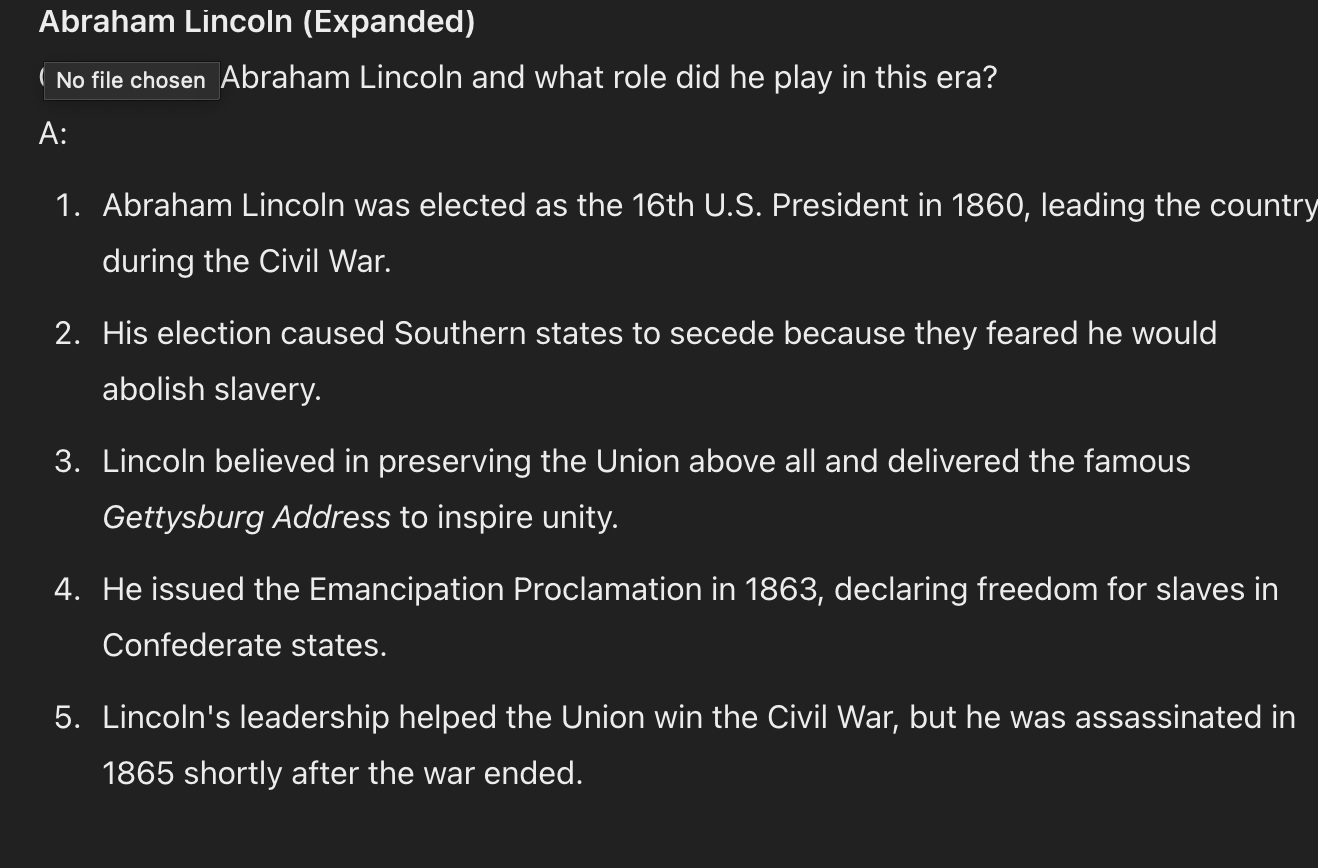history pre civil war
1/19
There's no tags or description
Looks like no tags are added yet.
Name | Mastery | Learn | Test | Matching | Spaced |
|---|
No study sessions yet.
20 Terms
What did the Compromise of 1820 do?
admitted Missouri as a slave state, Maine as a free state, and banned slavery north of the 36°30′ line.
What was the Indian Removal Act?
law that forced Native Americans to move west of the Mississippi River, leading to the Trail of Tears.
What did the Compromise of 1850 do?
admitted California as a free state, allowed popular sovereignty in some territories, and included a stricter Fugitive Slave Act.
What was the Fugitive Slave Act?
A law that required escaped slaves to be returned to their owners, even in free states.
What did the Kansas-Nebraska Act do?
allowed territories to decide on slavery through popular sovereignty, repealing the Missouri Compromise.
Why is Fort Sumter important?
was where the first shots of the Civil War were fired in 1861.
What happened at Harper’s Ferry?
John Brown led a raid to start a slave revolt but was captured and executed.
What does "Antebellum" mean?
period before the Civil War, marked by tensions over slavery.
What is popular sovereignty?
The idea that territories should vote to decide if they allow slavery.
Who was Abraham Lincoln?
The 16th U.S. President who led during the Civil War and abolished slavery with the Emancipation Proclamation.
What was the Dred Scott decision?
A Supreme Court ruling that said African Americans were not citizens and Congress couldn't ban slavery in territories.
Who was Jefferson Davis?
The President of the Confederate States during the Civil War.
Who was John Brown?
An abolitionist who used violence to fight slavery, including the raid on Harper's Ferry
Who was Harriet Tubman?
A former enslaved woman who helped hundreds escape slavery via the Underground Railroad.
Who was Harriet Beecher Stowe?
The author of Uncle Tom’s Cabin, a book that increased anti-slavery sentiment.
Who was Frederick Douglass?
A former enslaved man, abolitionist, and author who spoke against slavery and for equal rights.
Which states seceded from the Union?
Eleven states, including South Carolina, Mississippi, Alabama, and Texas, formed the Confederacy.
Which state seceded first?
South Carolina in December 1860.
Why did some states secede?
They wanted to protect slavery and felt states' rights were threatened by Abraham Lincoln’s election.

a
a